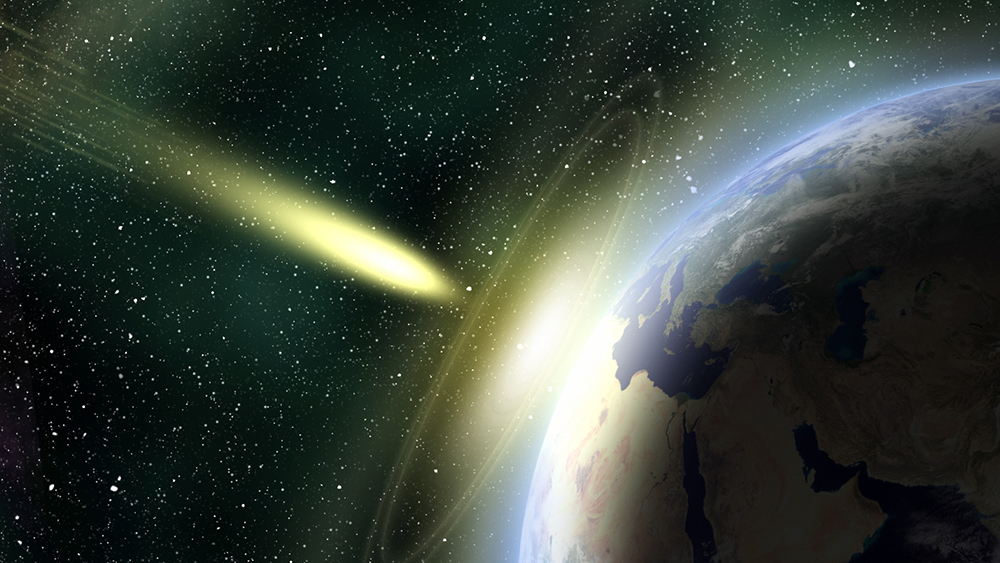 Parler
Parler Gab
Gab
- The interstellar comet 3I/ATLAS exhibits unusual traits, including a massive sunward gas jet, high nickel content in its plume and an unobservable perihelion – leading some scientists like Avi Loeb to speculate a 30-40 percent chance it's artificial. Its size (3 to 7 miles) and speed surpass previous interstellar objects like 'Oumuamua, defying natural expectations.
- Randall Carlson links 3I/ATLAS to apocalyptic descriptions in Revelation 19:12–15 and ancient flood myths, suggesting its behavior mirrors theorized Younger Dryas comet impacts (12,800 years ago) that triggered global catastrophes. This fuels theories of cyclical cosmic disasters hidden in religious texts.
- While NASA and astronomers like Miquel Serra-Ricart dismiss anomalies as typical comet behavior (sublimation jets, solar heating), dissenters highlight government secrecy and Loeb's evidence of non-natural origins. The comet's perihelion on Oct. 29 – hidden behind the sun – adds to suspicions of deliberate obscurity.
- Conspiracy researchers warn 3I/ATLAS could align with a broader depopulation or control scheme, echoing globalist use of celestial false flags. Its timing and behavior revive debates about extraterrestrial technology and whether elites exploit cosmic events to manipulate public perception.
- Post-perihelion, 3I/ATLAS will re-emerge in December for further study. NASA claims no Earth threat (149 million miles away), but alternative voices urge vigilance, citing historical comet impacts and the possibility of engineered celestial phenomena tied to ancient prophecies.
Biblical apocalypse or cosmic coincidence?
Most astronomers dismiss any notion of artificial origins, insisting 3I/ATLAS behaves like any other comet. As it nears the sun, uneven heating causes sublimated gases to burst through weak spots, forming jets. Some material remains in the coma, while solar radiation pushes the rest into the comet's iconic tail. While mainstream scientists insist this is typical comet behavior, dissenting voices suggest something far more extraordinary may be at play. Harvard astrophysicist Avi Loeb – known for his controversial stance on extraterrestrial technology – argues there's a 30 to 40 percent chance the object is artificial. He cites several anomalies:- Unusual size and speed – far larger and faster than previous interstellar comets.
- High nickel content in its gas plume, differing from typical comet composition.
- Unobservable perihelion – it would vanish behind the sun during its closest approach on Oct. 29.
Big Food’s deceptive new coalition aims to gut state food safety laws
By Cassie B. // Share
FBI Director Kash Patel removes agent linked to Trump probe as political purge intensifies
By Kevin Hughes // Share
Scientists discover a shocking new way to breathe – through the gut
By S.D. Wells // Share
New study uncovers how common vaping ingredient transforms into potent lung toxins
By Ava Grace // Share
Governments continue to obscure COVID-19 vaccine data amid rising concerns over excess deaths
By patricklewis // Share
Tech giant Microsoft backs EXTINCTION with its support of carbon capture programs
By ramontomeydw // Share
Germany to resume arms exports to Israel despite repeated ceasefire violations
By isabelle // Share










